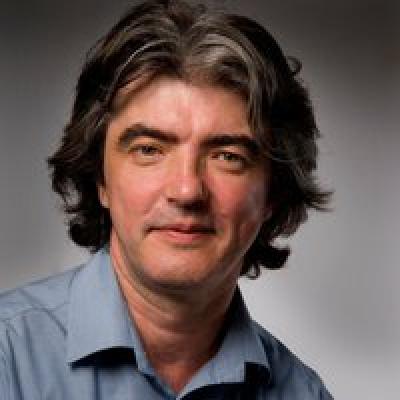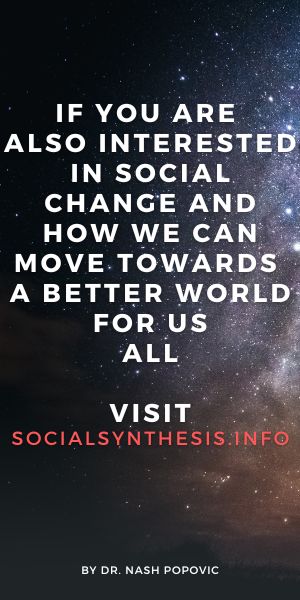THE NATURE OF LIFE
The Self

Written by Dr. Nash Popovic
What the Self is not
We need first to clarify that the self is different from ‘I’ which can be considered the sum of its identifications. The self already exists when an infant is born, while many aspects of ‘I’ (or our personality) do not, but are slowly formed. In the physical life, the self identifies with that which provides the materials to awareness and can be influenced by intent. This is normally a physical body with its senses and the nervous system. That the self identifies with the body rather than being the body is demonstrated by the fact that in dreams, the self can dis-identify from the body and identify with a self-image (without even noticing the difference). The same applies to one’s name, nationality, various roles, personal habits and other elements of our personality. They all constitute what is commonly referred to as ‘I’, but they are not part of the self, nor is the self part of them. In summary:
The self itself, the necessity – as Kant put it – of the ‘I think’ being able to accompany all of my representations, a transcendental ego which is quite different to, and independent of, the empirical self that in the natural standpoint each of us identifies as ‘me’. (Solomon, 1988, p.136)
So, any part of oneself that the person can observe, imagine or think of, is a part of ‘I’, not the self. For example, you can ‘observe’ your thoughts, but this very ability to observe highlights the distinction between the ‘observer’ and the observed (thoughts themselves). However, if you have an image of the one who observes, this also can only be just another identification, not the self. Michael Daniels, a psychologist with a special interest in transpersonal psychology, explains this well (although he uses somewhat different terminology: what we call the self he refers to as the ‘real I’):
This mental-intellectual realisation of our own subjectivity occurs at the moment when I have the thought that I exist as an experiencing and active centre. It is, therefore, based on the simple ideas that ‘I experience this’ and ‘I do this’. Such thinking immediately sets up a dualism between subject and object. Since I also realise that any ideas about myself are themselves objects to experience then ‘I’ cannot be any thing I think I am. The real ‘I’ must, therefore, be the subject – the witness or agent who is distinct from any mental contents such as perceptions, thoughts, intentions or self-concepts. (2005, p.168)
What the Self is
The self is a different kind of entity from the body or its parts. The argument from personal identity makes it quite clear. Philosopher Geoffrey Madell writes: ‘…while my present body can thus have its partial counterpart in some possible world, my present consciousness cannot. Any present state of consciousness that I can imagine either is or is not mine. There is no question of degree here’ (1981, p.91). In other words, if your parents conceived your body a day earlier or later it may have been to a degree different; but you, as a subject, would either exist or not (it would be you or somebody else – no degree). This makes the self unique, and unlike physical bodies, it cannot be described (or imagined), except perhaps as being an infinitely small, indivisible point. A developmental psychologist with a transpersonal bent, Jenny Wade, writes:
Everyday consciousness contains a transcendent element that we seldom notice because that element is the very ground of our experience. The word transcendent is justified because if the subjective consciousness – the Observing Self – cannot itself be observed but remains forever apart from the contents of consciousness, it is likely to be a different order from everything else. Its different nature becomes evident when we realize the observing self is featureless, cannot be affected by the world any more than a mirror can be affected by the images it reflects. (1996, p.56)
This ‘true’ self is recognised and variously described by different traditions as the Atman, spark, centre, apex of the soul, or ground of the spirit. However, sometimes the self is taken as something above and superior, implying that individuals should strive to ‘connect’ with it[1]. Such interpretations can be misleading (especially if it is attempted to imagine that ‘higher self’). Considering that the self enables experience, and we are experiencing most of the time, the self must already be ‘connected’. This connection can be compared to the relationship between somebody who is playing a computer game and the character in the game with whom the player identifies. The player can be so engrossed in the game that he may forget himself and the real world, but nevertheless, the one who is experiencing and is the source of any action within the game is the player himself not the character in the game.
The self can be considered the focal point of a relatively discrete energy field, and is a property of all life forms. From this perspective, it is universal. Everybody is different, but this has nothing to do with the self. Individual differences are the result of qualitative and quantitative differences in the energy configurations that are focused in the self and the mediums with which the self identifies.
[1] One example of this view can be found in Assagioli’s ‘Psychosynthesis’ model.
The Purpose of the Self
The most important function of the self, as the focusing point, is to enable awareness and intent. Without the self, nobody would be there to be aware. As Chandler puts it, ‘both understanding and consciousness depend on something outside, i.e. transcending the computational system, something which knows and relates them’. (1995, p.360).
Awareness is intimately related to experience, so it can be said that the self makes experience possible. However, the sort of experience one will have and its quality depends on what a self identifies with. Physical pain, for example, will affect the person to the extent to which the self identifies with the body at that moment. A character in Charles Dickens’s Hard Times, when asked on her sick-bed whether she was in pain, answers: ‘I think there’s a pain somewhere in the room, but I couldn’t positively say that I have got it.’ Anecdotal evidence suggests that many people have had a similar experience when their association with the body (or a part of the body) is weakened[2].
Without the self, intent (self-initiated action) could not exist either. Awareness and intent can be considered other forces (besides the four recognised in the material world). Some scholars reject this possibility on the basis that in this case we would all be telepathic or telekinetic. But this does not follow. The effects of awareness and intent come about only in particular circumstances and on a subtle level (the same applies to the physical forces – weak and strong nuclear forces were not even recognised until recently). In most cases, intent can directly affect only the matter with which its source (the self-soul) is engaged, which is usually the brain, and awareness is even more specific. It affects its source, rather than its object (some quantum physicists would claim that it can also affect its object, but this is debatable). This is not to say that the self exists only when the person is aware and intends (just as the eye pupil does not disappear when the eye is shut). The continuity is preserved despite unconscious episodes, because most energy waves remain focused even when awareness and intent are not obviously involved. It is stipulated that only waves that create positive feedback loops in the brain are implicated in awareness. Waves linking the self and the physical body last as long as the body functions.
The self is also necessary for binding, so that a person can be and can act as a whole. It has a unitary or integrative function not only in relation to our past experiences but also our present evaluations and constructs, as well as our future expectations or predictions. Eccles writes that ‘the self has the drive or the need or the tendency to unify and bring together the various activities of the brain.’ (Popper and Eccles, 1977, p.498)
All this enables a degree of auto-control. Although many processes in the body and brain are not under the direct influence of the self and its energy field, the self can still have (through its identifications) an overall control, a function similar to an operator. The importance of this function can be recognised if the experience of those who have lost it is observed:
…without the everyday orientation of being the one who controls, the ‘operator’ who directs the mind, he realizes that he must function without a sense of self… the person entering psychosis creates limitless confusion by trying to reinforce his personal identity, in an attempt to catch his bearings by trying to build himself up. (Podvoll, 1990, p.145)
The comparison with an operator should not be pushed too far, though. In most cases the self is only a potential operator. The self can have an effect only when these factors are in a relative equilibrium. Other stronger factors (such as physical and environmental conditioning) may have a greater influence. However, through the processes of evolution and development, the dominance of these factors gradually decreases and the role of the self correspondingly increases. In other words, through life experiences, the self-soul is learning to master its energy.
The self is the equivalent of the One on the level of individual life forms. It relates (potentially) to one’s inner world as the One relates to Reality. The self intends, but does not perform. Furthermore, although the self enables a person to be aware of their thoughts (as well as everything else) and form proactive, creative ones, it does not think in a conceptual way. Being the source of awareness and intent, but not of conceptual thinking is not a contradiction. It is like a user-computer system. The computer has its own language that the user does not need to understand in order to interact with the computer and be aware of what is on the screen; which is, in the case of the self, the end result of mental process. To think in terms of images, words and other representations, some hardware is also necessary – the brain. The self is rarely aware of the routes that lead to formed thoughts and, of course, our thoughts are not always intentional.
[2] Of course, the other way around applies too: the intensity of an experience (at least up to a point) can make the identification stronger.
The Dynamics of the Self
Energy associated with the self is in constant flux – this is what actualises the dynamic principle. The self embodies the static principle – it does not change, it simply is. Metaphorically speaking, the self is like an antenna that is picking up the waves. This is not to say that its relative position within the energy field is fixed. A change of the relative position within its energy field depends on the energy redistribution (in other words, of the ‘shape’ of the soul) and it can be felt as being in depth or near the surface, for example. Such moves can be influenced by the qualities of interaction with the environment such as intensity and attachment. Increased intensity (excitement) seems to draw the self towards the surface, while calming down leads to depth. A degree of involvement or attachment to external events can have even more lasting and profound effects in the same way


